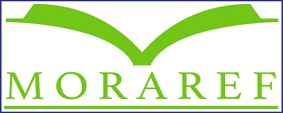MAXIMUM ENTROPY BASED URBAN FIRE RISK DISTRIBUTION MODELING UNDER CLIMATE INFLUENCES IN NORTH, WEST, AND SOUTH OF JAKARTA CITY
DOI:
https://doi.org/10.31004/prepotif.v6i2.5085Keywords:
AUC, fire, maximum entropy, urban, WorldClimAbstract
Fire incidents in urban setting were influenced by many factors ranging from population, building density to climatic variables. Currently, fire incident can be estimated using various variables and modeling methods including maximum entropy approach. Then the aim of this study is to model the probable spatial distribution of areas in Jakarta City mainly in North, West, and South districts that are prone to the fire risks. The model was developed using maximum entropy approach using climatic variables as predictors obtained from WordClim database. The model then was confirmed using area under the curve (AUC) values. The climatic models show that North and West parts of Jakarta receiving lower rainfall than South parts. Based on modeled probability distributions of fire risks, North and West parts were having highest probability distributions of fire risks with value of 50%. The AUC validates the probability distributions of fire risks model with AUC value of 0.64 ± 0.07. The results obtained from this study then can be used planning fire prevention.References
Banerjee, P. (2020). Maximum entropy-based forest fire likelihood mapping: analysing the trends, distribution, and drivers of forest fires in Sikkim Himalaya. Research Square.
Bekar, I.A,, Tavsanog, C., Pezzatti, G.B., Vacik, H., Bugmann, H., Petter, G. (2020). Cross-regional modelling of fire occurrence in the Alps and the Mediterranean Basin. International Journal of Wildland Fire.
Bo, M., Luca, M., Pognant, F., Daniele, C., Marina, C. (2020). Urban air pollution, climate change and wildfires: The case study of an extended forest fire episode in northern Italy favoured by drought and warm weather conditions.
Gai, C., Weng, W., Yuan, H. (2008). Urban Fire Risk Mapping Using Gis: A Case Study Of Yushan Town In Kunshan City, China.
He, A. Wang, W., Du, W., Wang, C., Chen, N. (2020). EML based urban fire incident modeling method and prototype. ISPRS Annals of Photogrammetry, Remote Sensing and Spatial Information Sciences.
Himoto, K., Tanaka, T. (2010). Physics-based modeling of fire spread in densely-built urban area and its application to risk assessment. Monograf´?as de la Real Academia de Ciencias de Zaragoza 34, 87–104.
Holden, Z.A., Swanson, A., Luce, C.H., Jolly, W.M. (2018). Decreasing fire season precipitation increased recent western US forest wildfire activity. Proceedings of the National Academy of Sciences, 115 (36).
Howden, S.M., Moore, J.L., McKeon, G.M., Reyenga, P.J., Carter, J.O., Scanlan, J.C. (1999). Global change impacts on fire dynamics in the mulga woodlands of south-west Queensland. Working Paper Series 99/05. CSIRO Wildlife and Ecology, Canberra.
Janiec, P., Gadal, S. (2020). A Comparison of two machine learning classification methods for remote sensing predictive modeling of the forest fire in the North-Eastern Siberia. Remote Sensing,
Khoir, A.N., Mamlu’aturR, S.A., Fadholi, A. (2018). Analysis of changes in daily temperature and precipitation extreme in Jakarta on period of 1986-2014. MATEC Web of Conferences 229, 02017.
Kim, S.J., Lim, C., Kim, G., Lee, J., Geiger, T. (2019). Multi-temporal analysis of forest fire probability using socio-economic and environmental variables. Remote Sensing. 11. 86.
Klimešová, D., Ocelíková, E. (2005). Spatial data modelling and maximum entropy theory. Agric. Econ. – Czech 51(2), 80–83.
Li, S., Davidson, R. (2013). Parametric study of urban fire spread using an urban fire simulation model with fire department suppression. Fire Safety Journal. 61, 217-225. .
Martín, Y., Zúñiga, M., Rodrigues, M., (2019). Modelling temporal variation of fire-occurrence towards the dynamic prediction of human wildfire ignition danger in northeast Spain. Geomatics, Natural Hazards and Risk. 10, 385-411.
Moriondo, M., Good, P., Durão, R., Bindi, M., Giannakopoulos, C., Corte-Real, J.(2006). Potential impact of climate change on fire risk in the Mediterranean area. Climate Research. 31, 85-95.
Nitschke, C., Innes, J. (2006). Interactions between fire, climate change and forest biodiversity. CAB Reviews Perspectives in Agriculture Veterinary Science Nutrition and Natural Resources. 1.
Parisien, M.A., Snetsinger, S., Greenberg, J.A., Nelson, C.R., Schoennagel, T., Dobrowski, S.Z., M.A.. (2012). Spatial variability in wildfire probability across the western United States. Int. J. Wildland Fire 21, 313–327.
Patac, J., Vicente, A., (2019). Urban fire spread modelling and simulation using cellular automaton with extreme learning machine. ISPRS - International Archives of the Photogrammetry, Remote Sensing and Spatial Information Sciences. XLII-4/W19. 319-326.
Poggio, L., Simonetti, E., Gimona, A., (2018). Enhancing the WorldClim data set for national and regional applications. Science of the Total Environment. 625, 1628-1643. .
Renard, Q., Pélissier, R., Ramesh, B.R., Kodandapani, N., (2012). Environmental susceptibility model for predicting forest fire occurrence in the Western Ghats of India. Int. J. Wildland Fire. 21, 368–379. .
Siswanto, Van Oldenborgh, G., Schrier, G., Jilderda, R., Hurk, B., (2015). Temperature, extreme precipitation, and diurnal rainfall changes in the urbanized Jakarta city during the past 130 years. International Journal of Climatology. 36.
Sudiana, N., Rofara, O., Astisiasari., (2018a). Urban fire risk analysis of DKI Jakarta Province. Jurnal Sains dan Teknologi Mitigasi Bencana. 13(2).
Sudiana, N., Umbara, R.P., Zahro, Q., (2018b). Study on the capacity of Cakung district towards urban fire disaster. Jurnal Sains dan Teknologi Mitigasi Bencana. 13(1), 44-56.
Syphard, A.D., Rustigian-Romsos, H., Mann, M., Conlisk, E., Moritz, M.A., Ackerly, D., (2019). The relative influence of climate and housing development on current and projected future fire patterns and structure loss across three California landscapes. United States.
Vilà V.L., Keeton, W., Thom, D., Gyeltshen, C., Tshering, K., Gratzer, G., (2020). Climate change effects on wildfire hazards in the wildland-urban-interface - Blue pine forests of Bhutan. Forest Ecology and Management. 461.
Yananto, A., Sibarani, R., (2016). Analisis Kejadian El Nino dan pengaruhnya terhadap intensitas curah hujan di wilayah Jabodetabek (Studi Kasus : Periode Puncak Musim Hujan Tahun 2015/2016). Jurnal Sains & Teknologi Modifikasi Cuaca. 17.65.
Downloads
Published
How to Cite
Issue
Section
License
Copyright (c) 2022 Isradi Zainal, Fatma Lestari, Satriadi Gunawan, Andrio Adiwibowo, Abdul Kadir, Noor Aulia Ramadhan

This work is licensed under a Creative Commons Attribution-ShareAlike 4.0 International License.
Authors who publish with this journal agree to the following terms:
- Authors retain copyright and grant the journal right of first publication with the work simultaneously licensed under a Creative Commons Attribution License that allows others to share the work with an acknowledgement of the work’s authorship and initial publication in this journal.
- Authors are able to enter into separate, additional contractual arrangements for the non-exclusive distribution of the journal’s published version of the work (e.g., post it to an institutional repository or publish it in a book), with an acknowledgement of its initial publication in this journal.
- Authors are permitted and encouraged to post their work online (e.g., in institutional repositories or on their website) prior to and during the submission process, as it can lead to productive exchanges, as well as earlier and greater citation of published work (See The Effect of Open Access).











